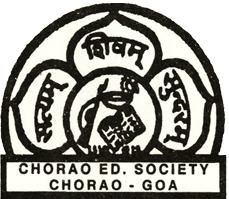SATYAM SHIVAM SUNDARAM
The general translation of the above Sanskrit saying is, "Truth, Godliness and Beauty". The accurate literal translation is "Truth, Like Shiva and Beauty". Lot is lost when any saying is translated from one ancient language to another modern language. In the original Sanskrit language the meaning conveyed by the words, "Satyam, Shivam Sundaram" is "Truth is Shiva, Shiva is God and Truth is Beautiful."
Satyam Shivam Sundaram is a Sanskrit phrase that has a significant meaning in the Indian Upanishads. Satyam Shivam Sundaram is used to show respect and devotion to Lord Shiva.
The unique feature of the Svetasvatara Upanishad is that it is a mixture of Jnana and Bhakti, knowledge and devotion. In other Upanishads the sacred word AUM has been stated as the symbol of Brahman while here Rudra or Siva is equated with Brahman, the Ultimate. This is very significant as Siva indeed is the expression of Ananda, Bliss for whom a devotional outpouring has been made in the Svetasvatara Upanishad in His aspect as Ananda (satyam, sivam, sundaram) mixed with the intricacies of Advaita. Another feature of these chapters of the Upanishad is that many Mantras or their wordings or their meanings are to be found in other popular devotional works like Rudra Prasna, Purusha Sooktam and Vishnu Sahasranaam besides the Bhagavad Gita.
(ABOVE PARAGRAPH SOURCE: https://esamskriti.com/essays/Svetasvatara-UP-TNS-Complete.pdf)
 The phrase was used at least several centuries before the movie. There is a commentary on Bhaktamal (composed by Nabhadas between 1583 and 1639) titled Bhaktirasbodhini composed by Priyadas in 1712. In the gloss on the Chappaya verse on Tulsidas, who Nabhadas calls the Sumeru of the Bhaktamal, occurs a record of a miracle attributed to Tulsidas when Brahmins of Varanasi tested the worth of Ramcharitmanas by placing it under the Vedas and other Sanskrit scriptures in the sanctum sanctorum of the Kashi Vishvanath Temple in Varanasi. The doors were locked, and when opened in the morning, the Brahmins found the words satyaṃ śivaṃ sundaram inscribed in the manuscript. So the phrase was in use before 1712 AD is what we can say.
The phrase was used at least several centuries before the movie. There is a commentary on Bhaktamal (composed by Nabhadas between 1583 and 1639) titled Bhaktirasbodhini composed by Priyadas in 1712. In the gloss on the Chappaya verse on Tulsidas, who Nabhadas calls the Sumeru of the Bhaktamal, occurs a record of a miracle attributed to Tulsidas when Brahmins of Varanasi tested the worth of Ramcharitmanas by placing it under the Vedas and other Sanskrit scriptures in the sanctum sanctorum of the Kashi Vishvanath Temple in Varanasi. The doors were locked, and when opened in the morning, the Brahmins found the words satyaṃ śivaṃ sundaram inscribed in the manuscript. So the phrase was in use before 1712 AD is what we can say.
- Nityānanda Miśra
(ABOVE PARAGRAPH SOURCE: https://groups.google.com/g/samskrita/c/GHJIrAK7zyk?pli=1)








